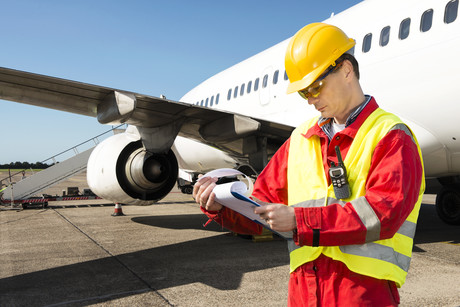Council meets strict CASA regulations for drug and alcohol screening

While it is common for regional shires in Australia to cover a great expanse, at 67,000 square kilometres Quilpie Shire in south-western Queensland is larger than most. Comprising an area roughly the same size as Tasmania, the shire is made up of a number of smaller towns, including Adavale, Cheepie and Toompine, but the bulk of the population (around 600 people) is concentrated in the town of Quilpie itself.
Shire boundaries extend as far as Charleville, Thargomindah and Windorah, complicating the implementation of a comprehensive drug and alcohol testing program due to the sheer distances involved. In addition, the council owns and operates the local airport, meaning it must comply with strict Civil Aviation Safety Authority (CASA) regulations for drug and alcohol screening.
Mike Castles has worked for Quilpie Shire for over 11 years and lays claim to a number of titles including Quality Assurance Officer, Workplace Health & Safety Advisor and Workplace Rehabilitation & Return to Work Coordinator.
In his role, Castles is responsible for the health and safety of around 70 staff, including administrative and field staff across 10 different work groups. The field team is primarily made up of road construction crews, parks and gardens staff and other outdoor workers. In addition to those employed directly by council, contracting and subcontracting staff are also under Castles’ remit.
Quilpie Shire has been conducting drug and alcohol testing since 2009 — in the case of airport staff — with a broader policy developed in 2012 to incorporate screening of all council workers, contractors and subcontractors. Under the directive of the council CEO, Castles conducts a program of random testing across each of the workgroups at various times throughout the year. Testing on suspicion and post incident is also carried out, and staff can request a screen before commencing a shift if they are concerned about their own fitness for work.
Prior to using the Pathtech solution, Quilpie Shire was using a lollipop-style oral testing product. According to Castles, some staff members found the devices awkward to use, so he decided to investigate other options in order to lessen the discomfort.
“I started to look around at alternatives and came across the DrugWipe solution. I thought it looked like a better option. It was around the time that many of the police agencies across Australia had started to use it and that seemed like a good recommendation,” he said.
“Although our policy has provision for urine testing as well, we rarely conduct it. As a town of only 600 people, we don’t even have a permanent doctor. We have two that rotate on a fortnight on/fortnight off basis, so it is easier for us to utilise a saliva testing option to get fast, accurate results. Once I determined I wanted to know more about the DrugWipe device, I requested a sample and we took it from there,” Castles said.
Quilpie Shire opted to use the DrugWipe 5S, which screens for cannabis, opiates, cocaine, amphetamines/methamphetamines and ecstasy. The device will deliver results on recent use as opposed to urine testing, which has a longer detection window.
“We are only interested in determining an employee’s fitness for work and providing a safe workplace. We don’t need to know anything about choices that individuals make regarding their own lifestyle and we certainly aren’t looking to penalise people for things they do outside of work,” Castles said.
The tough environmental conditions and remote location of many staff to be tested also influenced the decision.
“In summer we regularly see temperatures up to 45°C, which can make it difficult to produce a decent saliva sample,” Castles said.
“The fact that the DrugWipe only requires a minimal quantity of saliva compared with other alternatives is certainly a benefit in those circumstances,” he said.
“In addition, we are travelling vast distances to conduct testing. Accuracy becomes even more crucial in this case, as a range of logistical implications come about in the event of a non-negative reading. If you need to stand staff down pending confirmatory testing, it’s not a simple matter to call out a replacement when there’s a 200 km drive involved. We need to be confident that we are getting accurate results and the DrugWipe delivers that,” he said.
Castles said that staff have been very accepting of the process.
“Once we developed the broader policy, we needed to run it past a few agencies — CASA had to audit and approve it and we needed to get the relevant unions on board as well. That was all straightforward enough and we’ve had no major objections or complaints from our staff. They understand the motivation — we just want everyone to be safe and that’s why we encourage self-testing prior to a shift if anyone has any concerns,” he said.
“The results really speak for themselves. In all the time we’ve been testing, we’ve had only two positive alcohol results and no positives for drugs. We conduct random testing on various groups around once a month and twice a year we do full screening of the entire staff, so that’s not a bad outcome,” he said.
Top tips: Starting a workplace drug and alcohol testing program
Implementing a comprehensive and robust workplace testing program can help to reduce drug- and...
Workplace drug and alcohol programs: some key considerations
When it comes to substance abuse in the workplace, construction is considered one of the...
Saliva-based drug testing tech drives bus group safety
An advanced drug and alcohol testing solution has been adopted by a bus operator to ensure the...










